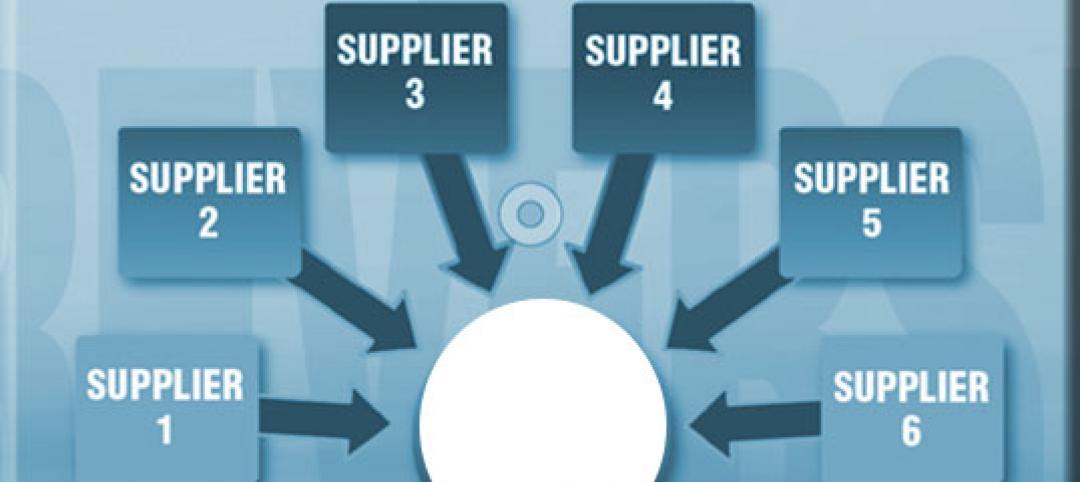AEC firms and their developer clients should be watching the progress of two bills wending their way through Congress that, if passed, could become important first steps toward opening the writing of flood insurance policies to private-sector carriers.
The U.S. House of Representatives recently passed HR 2901, the Flood Insurance Market Parity and Modernization Act of 2015, on a vote of 419-0. The U.S. Senate is currently reviewing similar legislation, SB 1679, on which it is expected to vote this summer.
The bills expand upon the controversial Biggert-Waters Flood Insurance Reform Act of 2012, which clarified the intent of Congress to get the private insurance sector to develop flood-insurance products that could compete with taxpayer-subsidized policies offered through the National Flood Insurance Program (NFIP).
That program is more than $23 billion in debt and has more than $1.1 trillion in total property exposure. NFIP’s main problem has been that it hasn’t been charging policyholders enough for flood coverage, explains Anthony Kammas, a partner with New York-based Skyline Risk Management, surety and insurance brokerage, who is also Secretary-Elect of the Professional Insurance Association (PIA).
Biggert-Waters called for the phasing out of subsidies and discounts on flood insurance premiums, and pushing more risk onto private-sector insurers and policyholders. Under Biggert-Waters, 5% of policyholders—including owners of non-primary private residences, business properties, and “severe repetitive loss properties” that are subject to redrawn floodplain maps—would have incurred 25% per year rate increases “until the true risk premium is reached.” Another 10% of policies would retain their NFIP subsidy until the owners sell their houses or let their policies lapse.
Policyholders screamed about those premium hikes, especially since the new maps put a lot more real estate within floodplains.
“It became clear that flood insurance needed to be repriced,” says Kammas. By the government agreeing ultimately to more gradual premium increases that would be priced using actuarial models, “private carriers started to think that they could make money on a primary basis.” Kammas adds that reinsurers are looking for places where they can put investors’ dollars to work.
Last month, PIA and a contingent of members spent two days on Capitol Hill meeting with lawmakers, including New York Sen. Chuck Schumer and New Jersey Sen. Robert Menendez, to urge them to support the bills that would open up the flood market to private carriers.
Kammas says the association’s goal is not to eliminate NFIP—“it will never disappear,” he says—but to make it the carrier of last resort. Kammas acknowledges that NFIP would be needed to provide flood insurance in flood-prone areas for which private carriers are less likely to offer policies. PIA also wants Congress to reauthorize the government flood program for 10 years, instead of annually, which the association believes would lend more stability to the marketplace.
Under NFIP’s “write your own” program, private carriers are allowed to service coverage that’s written by NFIP (Skyline does this). If the Senate passes SB 1679, the next step, says Kammas, would be to get private insurers engaged in offering their own flood-insurance products. (He could not provide names, but Kammas says a number of private insurers have policies that are ready to go.) The terms and conditions of such policies still need to be worked out, however, including their pricing.
“There’s a lot of work to be done, because there’s no historical information in place,” says Kammas.
He says AEC firms and developers need to be paying attention to how floodplains have been rezoned, and to make sure their policies are in compliance with their lenders’ requirements. They should also make sure that, in the event they choose to switch coverage to a private carrier, their current policies provide a continuity of coverage. And lastly, given how there’s no competitive pricing currently, policyholders would need to price-shop carefully to make sure they are getting the coverage that matches their needs at the lowest price.
Related Stories
| Sep 5, 2013
State legislatures continue to raise the bar on green school construction
Since the beginning of 2013, the USGBC has followed more than 125 bills across 34 states that seek to advance healthy, high-performing schools.
| Aug 20, 2013
Code amendment in Dallas would limit building exterior reflectivity
The Dallas City Council is expected to vote soon on a proposed code amendment that would limit a building’s exterior reflectivity of “visible light” to 15%.
| Aug 20, 2013
L.A. City Council approves plan for new $1 billion Watts development
Los Angeles city officials have voted to revitalize a notorious Watts housing project with shops, town homes, and green spaces.
| Aug 19, 2013
Baltimore City Council committee OKs taxpayer assistance for $1.8 billion Harbor Point mixed-use project
A Baltimore City Council committee approved a plan to give millions in taxpayer assistance to the $1.8 billion Harbor Point development.
| Aug 8, 2013
Bipartisan bill would strengthen model building codes to boost energy efficiency
The Energy Savings and Industrial Competitiveness Act, a bipartisan U.S. Senate bill, would strengthen model building codes to make new homes and commercial buildings more energy efficient.
| Aug 2, 2013
Texas law expected to help reduce construction payroll fraud
Texas lawmakers want to get tough on construction companies that commit a certain form of payroll fraud, passing a new law recently signed by Gov. Rick Perry.
| Jul 26, 2013
AGC launches new coalition to help bring tax relief to construction sector
Associated General Contractor of America (AGC) has launched the Coalition for Fair Effective Tax Rates to bring tax relief to the construction sector.
| Jul 26, 2013
Legislation would revamp federal contracting policy impacting small design and construction firms
Legislation was introduced in the U.S. House of Representative this month to ban reverse auctions when an agency determines small businesses are qualified to bid on the solicitation.
| Jul 17, 2013
U.S. House continues to block enforcement of light bulb standards
The House of Representatives last week voted to block the enforcement of light bulb standards that many say would effectively force people to buy more expensive compact fluorescent bulbs.
| Jul 11, 2013
Bill to borrow more for college spending in Michigan criticized due to ‘higher-ed bubble’
An amendment to a Michigan appropriations budget authorizes an increase in state debt to pay for state university construction projects. But some experts see a “higher education bubble” on the horizon, and said more taxpayer debt for more buildings is a bad idea.














